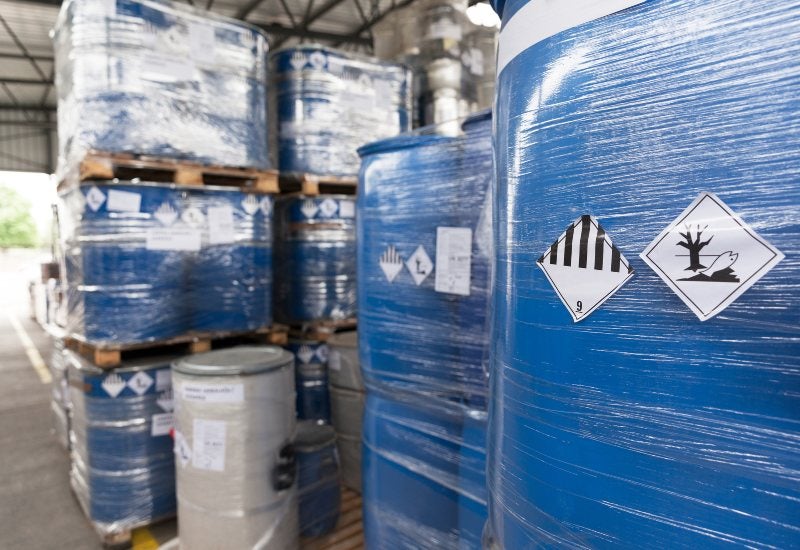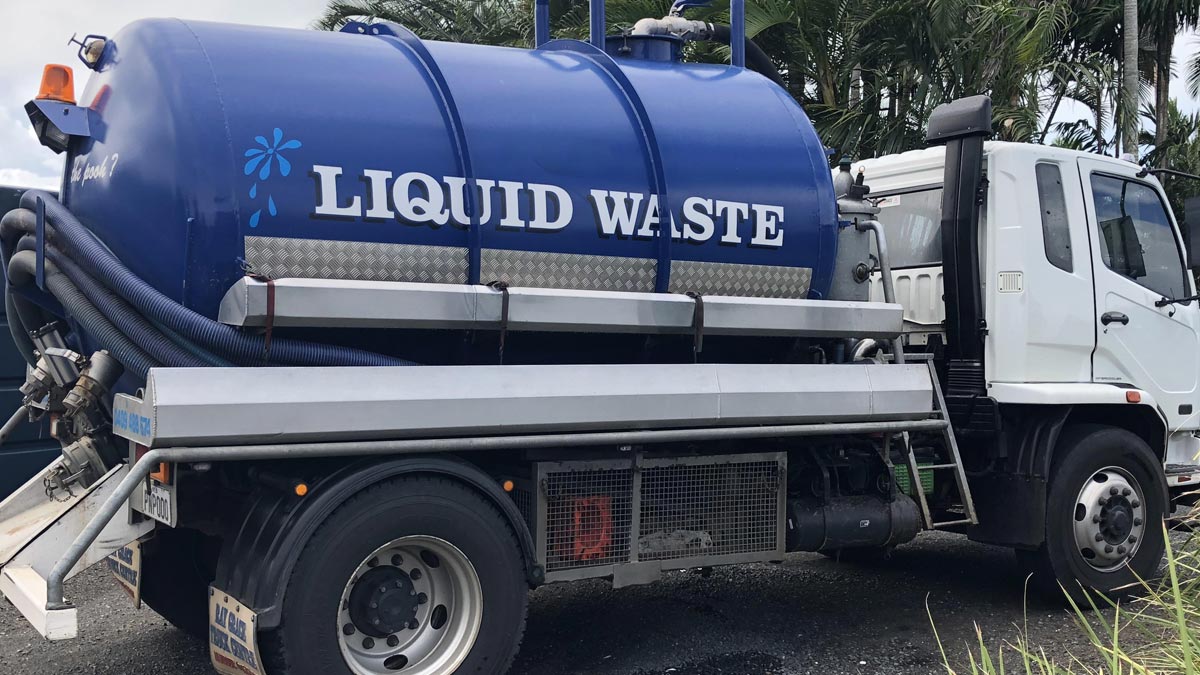Leading Industrial Wastewater Treatment Solutions: Making Certain Compliance and Performance
Leading Industrial Wastewater Treatment Solutions: Making Certain Compliance and Performance
Blog Article
Exactly How Liquid Waste Disposal Functions: A Thorough Review of Strategies and Technologies Employed

Overview of Fluid Waste Types
The complexity of fluid waste types requires an extensive understanding of their characteristics and ramifications for disposal. Liquid waste can generally be classified right into several kinds, consisting of industrial, metropolitan, agricultural, and contaminated materials. Each category shows unique residential properties, requiring certain monitoring methods to reduce ecological and wellness risks.
Industrial liquid waste stems from manufacturing processes and commonly has a variety of contaminants, such as heavy metals, solvents, and natural compounds. Local fluid waste, largely comprising wastewater from houses and commercial establishments, includes natural matter, nutrients, and virus (industrial wastewater treatment). Agricultural fluid waste, consisting of drainage from ranches, might contain fertilizers, pesticides, and animal waste, presenting risks to water quality and ecological communities
Hazardous liquid waste is characterized by its poisoning, sensitivity, or prospective to trigger harm. This classification includes materials like acids, bases, and particular chemicals that require stringent handling and disposal protocols. Comprehending these diverse liquid waste kinds is critical for developing reliable disposal approaches and making certain compliance with environmental policies. Proper category and characterization are crucial for implementing ideal therapy techniques and decreasing the damaging influence on public health and wellness and the atmosphere.
Physical Therapy Techniques

Testing is the preliminary step, where bigger fragments and particles are gotten rid of from the liquid waste utilizing screens or grates. In sedimentation tanks, larger bits work out at the bottom, forming a sludge layer, while the made clear fluid can be further dealt with.
Filtering is one more vital method that entails passing the liquid with porous products, such as sand or membranes, to record smaller sized bits. This step boosts the high quality of the fluid, making it appropriate for succeeding therapy processes.

Chemical Treatment Methods
Chemical therapy methods are necessary for efficiently handling fluid waste, specifically in addressing dissolved and colloidal impurities that physical approaches might not properly eliminate. These methods make use of various chemical agents to neutralize, precipitate, or transform dangerous materials right into much less harmful forms.
One usual technique is coagulation and flocculation, where chemicals such as alum or ferric chloride are included to advertise the aggregation of put on hold fragments. This procedure boosts sedimentation, enabling much easier removal of the resulting sludge. Additionally, oxidation processes, employing representatives like chlorine or ozone, are used to break down complicated organic substances and virus, making the waste much safer for discharge or more therapy.
Neutralization is one more important method, which adjusts the pH of acidic or alkaline waste streams to neutral levels, protecting against possible injury to downstream systems and the atmosphere. Additionally, progressed oxidation processes (AOPs) utilize mixes of oxidants and ultraviolet light to weaken consistent pollutants, accomplishing a higher degree of treatment effectiveness.
Biological Treatment Procedures
Biological therapy processes play a vital duty in the monitoring of liquid waste by making use of bacteria to decompose raw material and decrease impurity levels. These procedures can be broadly categorized right into cardiovascular and anaerobic treatments, each using specific microbial areas to accomplish reliable waste degradation.
Cardio treatment involves making use of oxygen to help with the failure of organic materials by bacteria. This procedure is frequently applied in turned on sludge systems, where aeration tanks give a favorable atmosphere for microbial growth, causing the oxidation of natural pollutants. The resultant biomass can be separated from dealt with effluent via sedimentation.
In contrast, anaerobic therapy happens in the lack of oxygen, depending on different germs to damage down raw material. This method is especially helpful for high-strength waste, as it produces biogas, a renewable resource source, while minimizing sludge manufacturing. Technologies such as anaerobic digesters are often used in municipal and industrial applications.
Both cardiovascular and anaerobic biological treatments not only lessen the ecological effect of fluid waste yet additionally promote source recuperation, making them vital components of lasting waste monitoring approaches. Their effectiveness, effectiveness, and flexibility sustain their prevalent application throughout various fields.
Emerging Technologies in Disposal
Innovative methods to fluid garbage disposal are swiftly evolving, driven by advancements in modern technology and a raising focus on sustainability. Amongst these emerging modern technologies, membrane layer bioreactors (MBRs) have obtained grip for their capacity to incorporate biological therapy with membrane filtration, resulting in high-quality effluent that can be recycled in various applications. MBRs make it possible for smaller sized impacts and more reliable operations contrasted to traditional systems.
An additional appealing development is using anaerobic digestion integrated see this with nutrient recovery innovations, which not just treats fluid waste but likewise produces biogas and recoups important nutrients like nitrogen and phosphorus. This twin benefit improves source efficiency and decreases environmental influence.
In addition, advanced oxidation procedures (AOPs) are being taken on for the degradation of intricate organic toxins. These techniques utilize effective oxidants and stimulants to damage down helpful resources pollutants at the molecular degree, offering a highly efficient option for tough waste streams.
Furthermore, the assimilation of expert system and artificial intelligence in waste management systems is optimizing operational effectiveness and anticipating upkeep, causing reduced expenses and boosted environmental compliance. These technologies show a considerable change in the direction of even more efficient and lasting fluid garbage disposal methods.
Final Thought
Finally, efficient liquid waste disposal necessitates an extensive understanding of various techniques and technologies. The assimilation of physical, chemical, and organic treatment methods ensures the efficient monitoring of diverse waste types. Additionally, the emergence of cutting-edge modern technologies boosts therapy efficiency and advertises sustainability in waste management techniques. By constantly progressing these methods, it becomes feasible to attend to the growing obstacles related to fluid waste, ultimately adding to environmental management and source recuperation.
Liquid waste disposal is an important element of ecological management, needing a comprehensive understanding of different techniques and technologies tailored to various waste kinds. Liquid waste can broadly be categorized right into numerous types, including commercial, municipal, farming, and dangerous waste. Agricultural fluid waste, consisting of runoff from farms, may include plant foods, chemicals, and animal waste, positioning dangers to water top quality and communities.
Numerous physical therapy methods play an essential role in managing liquid waste effectively - industrial wastewater treatment.In verdict, basics effective fluid waste disposal necessitates a thorough understanding of various techniques and technologies
Report this page